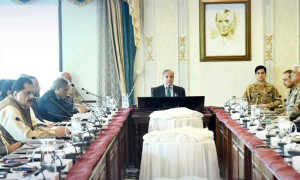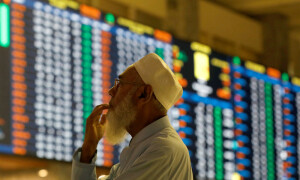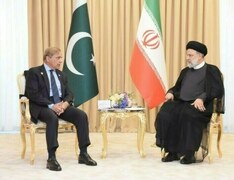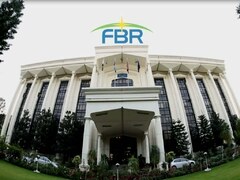ISLAMABAD: The World Bank (WB) has warned that a macroeconomic crisis could materialize in Pakistan, given the country’s low foreign exchange reserves and debt service obligations, in case the International Monetary Fund (IMF)’ Extended Fund Facility (EFF) is not completed and additional financing flows are not secured.
The bank in its report, “Pakistan Development Update Recent Economic Developments, Outlook, and Risk”, has revised downward GDP growth projection while saying that growth is expected to slow sharply to 0.4 percent in the fiscal year 2023, reflecting the tightening of fiscal policy, flood impacts, high inflation, high energy prices, and import controls.
Consumer price inflation is estimated to surge to an average of 29.5 in the fiscal year 2023, driven by exchange-rate pass-through to domestic prices and an increase in international oil prices.
2000-21 period: World Bank says Pakistan’s 3.1pc growth rate among lowest in S Asia
The bank further warned that policy reversals are possible in the lead-up to elections scheduled for October 2023, including delayed implementation of tariff adjustments, new subsidies, or other measures that would expand the fiscal deficit.
Any substantial departure from the current macroeconomic framework would exacerbate external and domestic financing risks, and potentially place debt on an unsustainable path.
Additional risks include political instability in the lead-up to planned elections, unanticipated deterioration of external economic conditions, regional security conditions and financial sector risks associated with revaluation losses, liquidity shortages, and the dominance of public debt in the banking sector’s portfolio.
The report noted that in the absence of public transfers that cover income losses or mitigate the impact of higher prices, poverty measured at the lower middle-income poverty line (3.65 USD/day 2017 PPP per capita) is projected to increase to 37.2 percent in the fiscal year 2023, pushing an additional 3.9 million people into poverty as compared to the fiscal year 2022.
The depth and severity of poverty has also increased, reflecting the overlapping impacts of multiple shocks and households’ lack of savings to mitigate short-term impacts.
The Bank stressed that to maintain stability and set the foundations for medium-term recovery, the government has to: i) sustain IMF program reforms and continue to adhere to overall sound macroeconomic management, including maintaining a flexible exchange rate and independent monetary policy targeting inflation; ii) progressively remove all import and dollar outflow restrictions, including curbs on profit and dividend outflows, to restore investor confidence; iii) contain the primary deficit within sustainability parameters through measures to increase revenues and rationalize expenditure; and iv) implement trade and private sector reforms to support improvements in investment, competitiveness, and productivity. Strong political ownership will be required to ensure reforms are credible and sustained over time.
To avoid a macro-economic crisis and revive consumer and investor confidence, the government must remain on track with stabilization and structural reforms under-pinning the IMF’s EFF, and secure critical external financing from bilateral partners, the Bank added.
It further stated that the government has taken ad-hoc administrative measures to preserve scarce foreign exchange reserves, but these measures have weakened consumer and investor confidence.
Private sector activity has been heavily impacted by import and dollar outflow controls, higher borrowing and fuel costs, and continued policy uncertainty leading to sharply slowing growth. Tighter global liquidity conditions and rising macro risks have curtailed Pakistan’s access to international capital markets.
Policy tightening, administrative controls and the weaker currency are expected to dampen imports, and as a result, the current account deficit is projected to narrow to two percent of GDP in the fiscal year 2023. The CAD is expected to widen marginally to 2.1 and 2.2 percent of GDP in the fiscal year 2024-2025 as import controls are phased out amid continued fiscal and monetary restraint.
The CAD narrowed to $0.23 billion and $0.07 billion in January and February 2023, respectively, as imports continued to contract due to administrative controls, and a weaker Rupee.
Cumulatively, the CAD in Jul–Feb fiscal year 2023 declined to $3.9 billion compared to a deficit of $12.1 billion in the same period in FY22.
During Jul–Feb fiscal year 2023, Pakistan received inflows of $700 million against the refinancing of Chinese commercial loans and $1.2 billion from the IMF.
However, due to a delay in the completion of the 9th review of the IMF EFF and associated external financing and larger amortization in the first 8 months of FY23, the financial account recorded a net outflow of $2.2 billion.
Pakistan’s external financing needs are projected to be, on average, $28.9 billion per year (eight percent of GDP) during fiscal year 2023-fiscal year 2025, including IMF repayments, maturing Eurobonds, and repayments against Chinese commercial loans.
The fiscal deficit (excluding grants) is projected to narrow to 6.7 per cent of GDP in fiscal year 2023 and gradually narrow further over the medium term as revenue mobilization measures, particularly GST harmonization and personal income tax reform, take hold.
Public debt as a share of GDP is projected to decline to 74 per cent in fiscal year 2023 and gradually to 72.2 per cent in fiscal year 2025 indicating limited solvency risks.
The Rupee remained under pressure due to a loss of confidence in line with the precariously low level of international reserves, political uncertainty, and persistent current account deficit. Despite an informal cap on PKR/US$ exchange rate in the interbank market, the Pakistani Rupee officially depreciated by 9.8 per cent against the U.S. Dollar in H1 fiscal year 2023.
The exchange rate cap led to a substantial spread, of as much as 5.1 per cent in September 2022, between interbank and open market exchange rates. The spread incentivized the use of informal channels for transactions (through hundi/ hawala) and contributed to further tightening of liquidity in the interbank market.
The CAP on exchange rate was removed in January 2023 leading to cumulative depreciation of 27.9 per cent between end-FY22 and March 22, 2023 and as a result, the spread between the interbank and open market rate reduced to 0.5 per cent.
Dwindling foreign exchange reserves, administrative import controls, flood-related supply-chain disruptions, high fuel costs, policy uncertainty, and the slowdown in domestic and global demand have affected industry and service sector activity, with large-scale manufacturing (LSM) output contracting by an average of 3.7 per cent over H1 2023.
Business and consumer confidence have continued to decline, suggesting continued suppressed activity over the coming months.
As Pakistan has been priced out of international capital markets, the government relied on expensive domestic financing to bridge fiscal financing needs.
The rapid expansion in the banking sector’s exposure to the government has led to credit to the sovereign accounting for 68.3 per cent of all the credit extended by the banking sector as of December 2022, up from 43.0 per cent in June 2010.
Growing exposure to the sovereign has come at the cost of credit to the private sector and is now exposing the banking sector to risks in the context of recent macroeconomic headwinds.
Copyright Business Recorder, 2023



























Comments
Comments are closed.